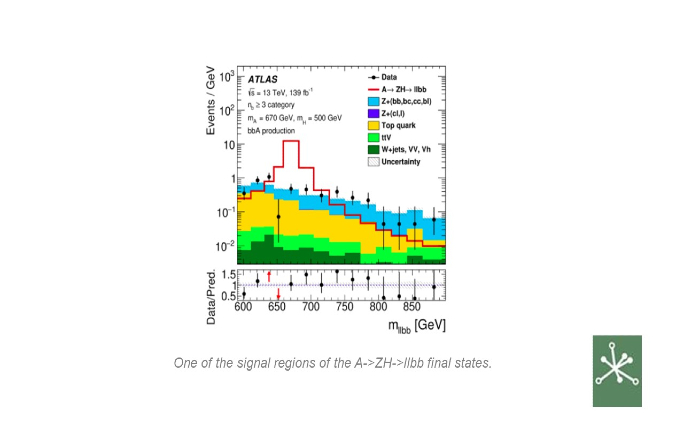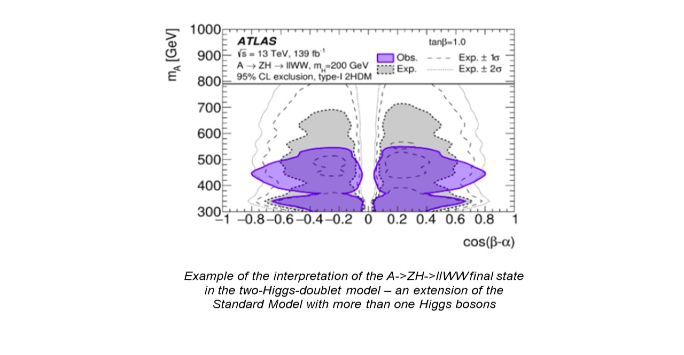ATLAS pushes the boundaries on Heavy Higgs bosons

How many Higgs bosons exist? We know that that there is at least one of them since the spectacular discovery of a Higgs boson at the Large Hadron Collider in 2012. But could they be more than one? In effect, many beyond Standard Model theories require more Higgs bosons, including supersymmetry, which is one of the most popular among theoreticians.
One can do a lot of things if there more Higgs bosons. For example, certain aspects of the history of the early universe may change in a way that our present is affected. It is known that in the early universe there were equal amounts of matter and antimatter and somehow, later on in the cosmic history, antimatter disappeared. The mechanism that gets rid of antimatter is known as “baryogenesis”. There are several possible ideas on how baryogenesis may have occurred and one of those involves several Higgs bosons.
This idea has the advantage that can be tested experimentally in high energy colliders, like the LHC. A scenario in which baryogenesis may have happened requires two electrically-neutral heavy Higgs bosons, A and H, in addition to the Higgs boson discovered at the LHC. These heavy Higgs bosons have also to have a mass difference that allows the decay of the heavier of the two to decay to the other and a Z boson (A->ZH) to take place.
This decay is what is sought after in a recent paper by the ATLAS Collaboration which was submitted for publication in European Physics Letters B. This result has been co-led by Liverpool physicist Dr Nikolaos Rompotis and constitutes a major part of the thesis work of Liverpool PhD student Alan Chan. The heavy Higgs bosons are sought after in two decay channels in which the Z boson decays to two leptons (Z->ll) and are differentiated by the way the H boson decays: H->bb and H->WW. The latter decay chain is looked for for the very first time in an experiment. The study shows no evidence for the existence of any additional Higgs bosons, however, it provides valuable information on how baryogenesis may or may not have happened.
More information:
- https://atlas.web.cern.ch/Atlas/GROUPS/PHYSICS/PAPERS/HDBS-2018-13/
- https://arxiv.org/abs/2011.05639
